I born in the western ghat region of southwest India. I grew up seeing heavy thrumming rain for weeks in the rainy season. Roads were skidding to walk. Schools were shut for days. Male frogs croaking all night to attract a mate disturbed my sleep.
A small pond along the road filled with muddy water sometimes floods and crosses the road. A small canal next to the road and in the areca farm has flowing water throughout winter until the summer.
This looked like a tale eventually after I moved to Bangalore and started visiting my village occasionally. The weather changed drastically in the malnad region. The land started hitting draught. In some villages, people see the bare wells which were full of water less than a decade ago.
Absorption pits and trenches of Hosahalli

Hosahalli is a small village in southwest India. Located in the Shivamogga district, the village had plenty of natural water supply. Springwater coming from the hills would suffice the daily needs for home and agriculture.
Villagers dug well not too deep whilst found the water at a very surface level. The village started suffering from the water crisis 5 years ago. The underground water level was going low.
Sensible villagers took immediate measures to recharge the underground water. They thought through possible solutions to natural rainwater harvesting which helped to build a sustainable village.
I am glad to chat with Jitendra Hindumane from Hosahalli village. Who voluntarily started the campaign in the year 2016. That helped not only Hosahalli but also neighboring villages to recharge the groundwater supply.
Let us listen to the story of the water warriors of Hosahalli. How they built a sustainable model village within 2 years is an eye-opener tale.
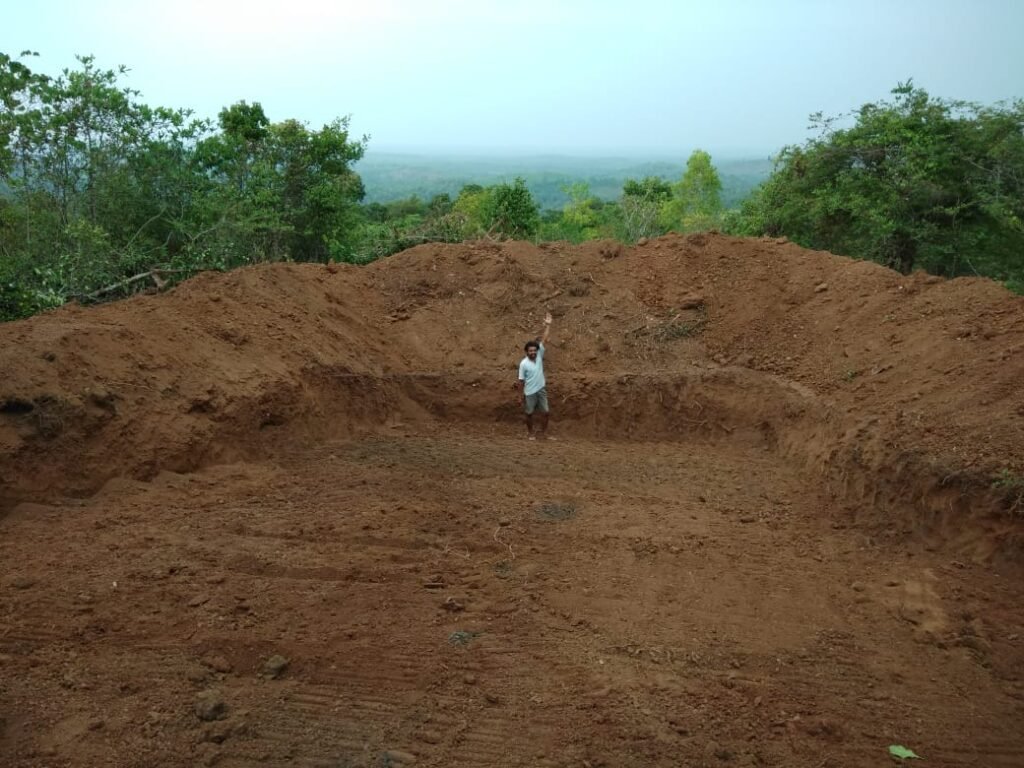
Me: What do you think is the reason behind the drastic water crisis in the western ghat region?
Jithendra: Well, Deforestation is the main reason for drought hitting badly in the region. Also several other factors in consideration. The paddy fields were acting as natural absorption pits. These days most of the rice fields converted into Areca farms which absorb massive groundwater.
Converting the paddy fields into Ginger farm is another cause of the water crisis. 10-15 years ago there was no concept of bore wells. Usually, farmers utilized flowing water in the creeks or open wells or lakes as the main source of water supply for cultivation.
Ginger farmers started digging bore wells more than 90 -100 feet deep into the earth. Such bore wells eventually lowered the groundwater level. What we are dealing with now is a man-made disaster.
Me: When did the Villagers realize the lack of underground water supply? How did you start the absorption pit campaign?
Jithendra: During the years 2016 – 2017, the rainy season was ephemeral. We started facing a crisis of drinking water. In the western ghat region, we farmers depend on the flowing water and an open well for a water supply.
We solely depended on the seasonal rain to fill these water sources. Once the summer starts at the end of February or in March we expect Thunderstorms that fulfilled our water supply every year.
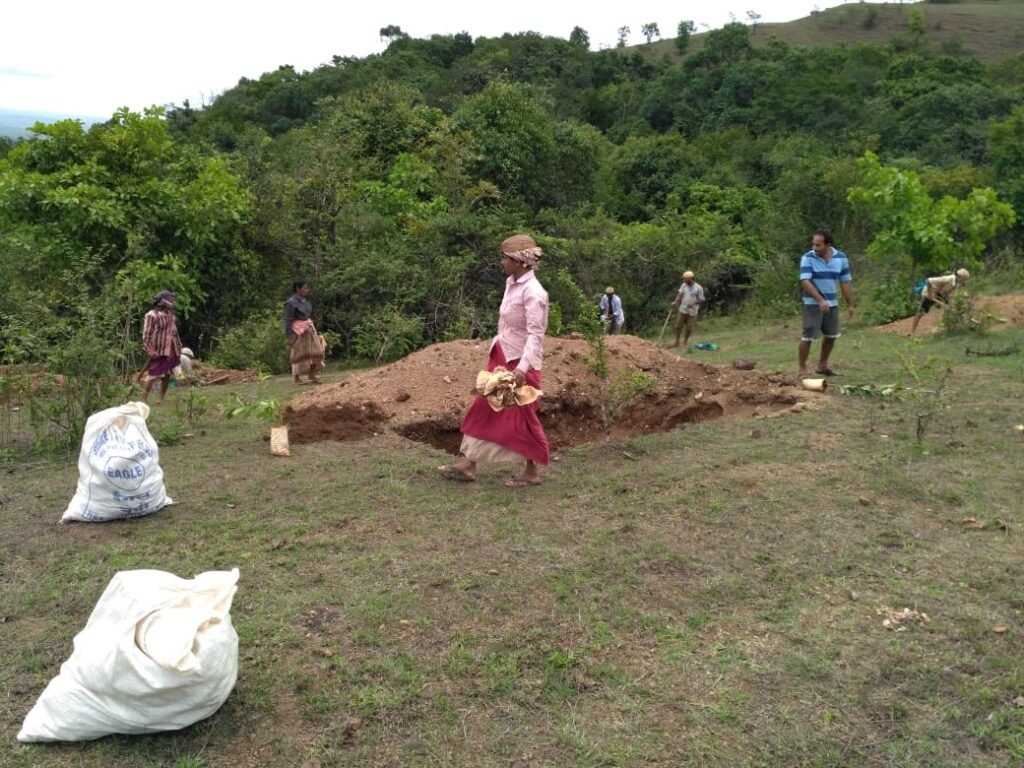
When we started facing an early catastrophe in 2016, I started thinking of possible ways to overcome the problem. I heard and read about absorption pits in the past. A writer Shree Padre wrote comprehensive articles about the absorption trench and pits around various parts of the country.
As I followed his idea for a long time, I gave it a thought and approached one of my friends Aruna. We discussed the consequences thoroughly and decided to spread the idea of digging absorption pits to other villagers.
We also included youth of a similar outlook from a neighboring village Hamsagaaru. We were 6 dedicated warriors who agreed to try. We decided to start the movement quickly and each of us choose to invest a small portion of the money as an initial funding.
In the morning we started working on digging the trench by hiring a JCB. In the evening we visited other villagers, convince them for funding our campaign. We collected plenty of money Rs 180,000 during the first year to dig 16-18 absorption pits of a bigger size.
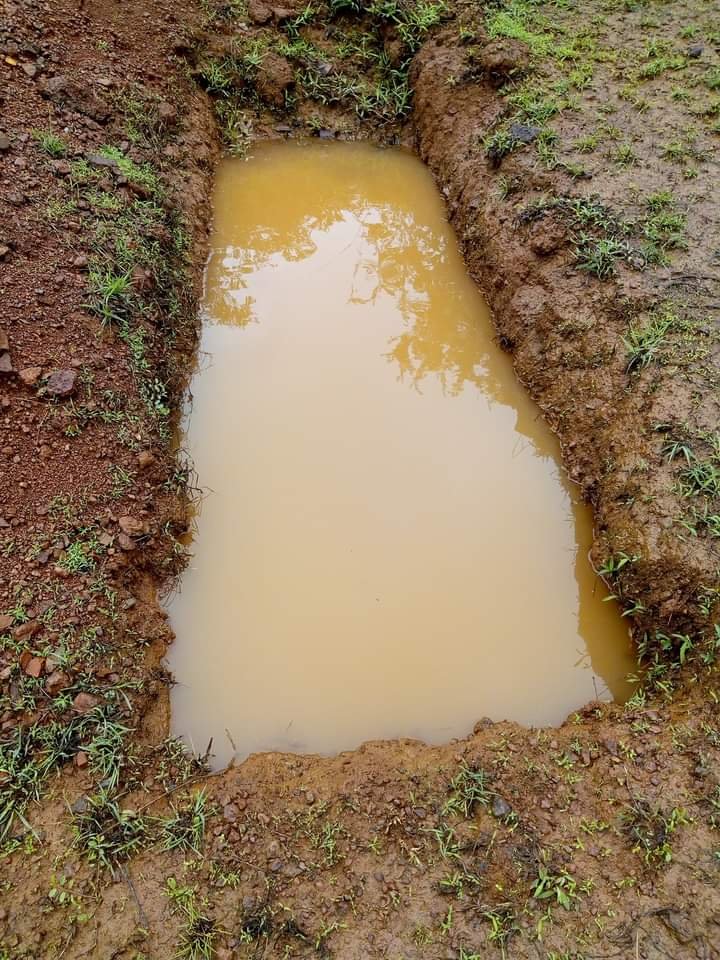
Me: What kind of landscape do you chose to dig such absorption pits and trenches?
Jithendra: Our region is surrounded by small hills. Usually, the base of the mounts can absorb water without even wasting a small drop. We opted for 20 to 30-acres of the valley to dig the huge pit.
That’s how all the rainwater from the top of those hills can be collected in one place. Excess water due to heavy rain can flow out of the pit. Hence we never faced land sliding. We also dug small to medium trenches on the slides of the hills.
Me: Each region has different landscapes. How to ensure digging excess pits may not cause land sliding or any other disaster?

Jithendra: It is necessary to make sure the pits are suitable for our region. There is a high possibility of land sliding if we delve deep on the bare mounts which don’t have trees. In such scenarios, we must opt for the base of the mounds to dig big pits before the water flows into the creek.
A trench is a better option for steep hills. Always a great idea to dig big pits on the base of the hills, or somewhere next to the roads on flat land. We can even convert the small roadside canals and drainages into an absorption pit. But regular maintenance needed for such pits as they may easily get deposited by slits.
Me: How did you guys manage to maintain the forests?
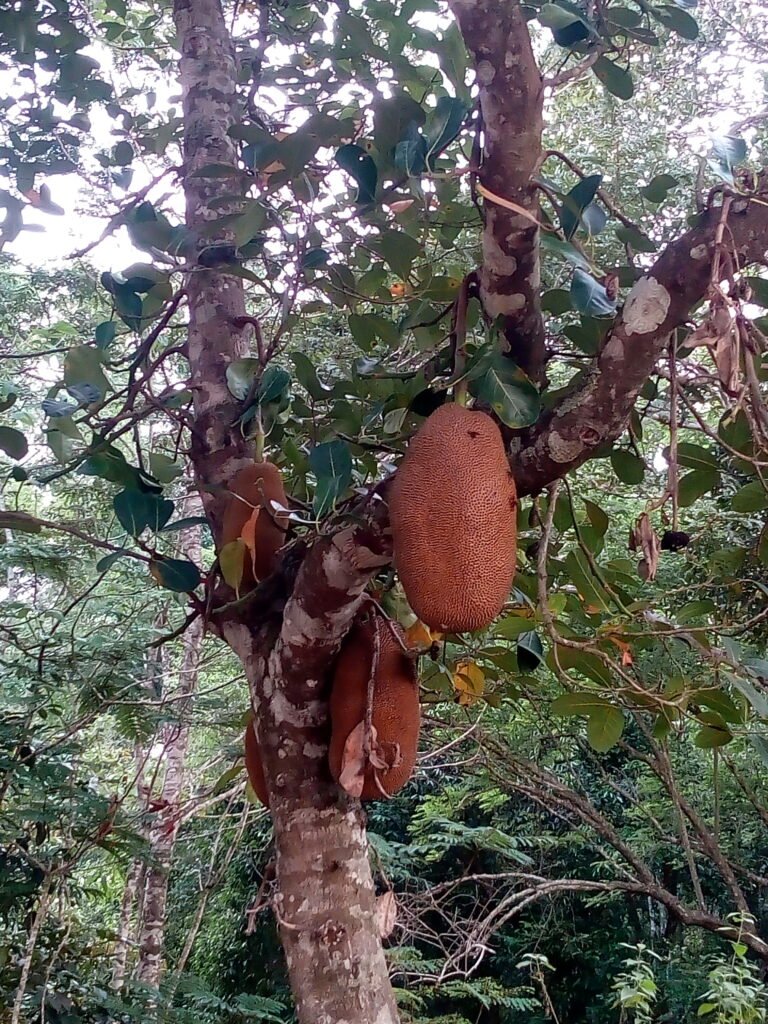
Jithendra: During the years 1990-1991, me and one of my friend decided to convince the villagers to plant 4 fruit trees each per home. There were 30 homes in the village at that time. Everyone was ready to cooperate. During those years we planted approximately 120 trees in a row.
Later one of our villagers Lakshinaraayana took care of all the plants on behalf of the village. He planted more trees in memory of his father who died in the same year. Those trees are now flourished with flowers and fruits all across the streets of our village.
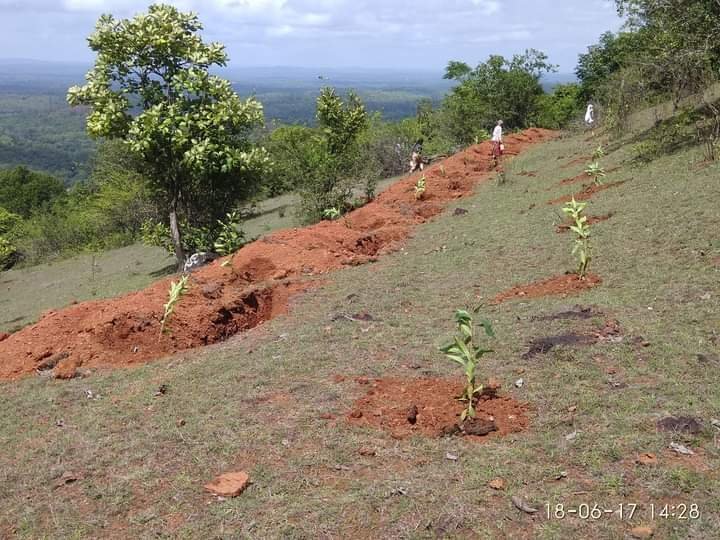
When we started the absorption pit campaign in 2017, we purchased around 2000 various local plants from the forest department. We made sure that species are easily adjusted to our terrain. We planted those trees on the hills where we were digging trenches.
Each year we are planting around 500 – 1000 such plants on average. We are taking care of those plants on a regular basis. After 2 years few folks from the nearest town and folks working in the IT sector in Bengaluru started volunteering for the campaign. They would come over the weekend to help us. Success is a combined effort of all.
Me: How do you think the administration can support such campaigns?
Jithendra: Government must invest some budget on building sustainable villages. In fact, that’s the necessity in the current situation. Every year they can adopt few villages in each district and enforce planting trees and dig ponds for rainwater harvesting.
They must allocate funds to each gram panchayat to maintain such campaigns and make sure effort is not wasted. They can form a committee to inspect each such village that was the beneficiary of the campaign on yearly basis. And conduct an inquiry if gram panchayat is not acting to utilize the budget properly.
There is the Mahatma Gandhi National Rural Employment act. Each gram panchayat must utilize the manpower who are beneficiaries of such scheme to build and maintain the sustainable village.

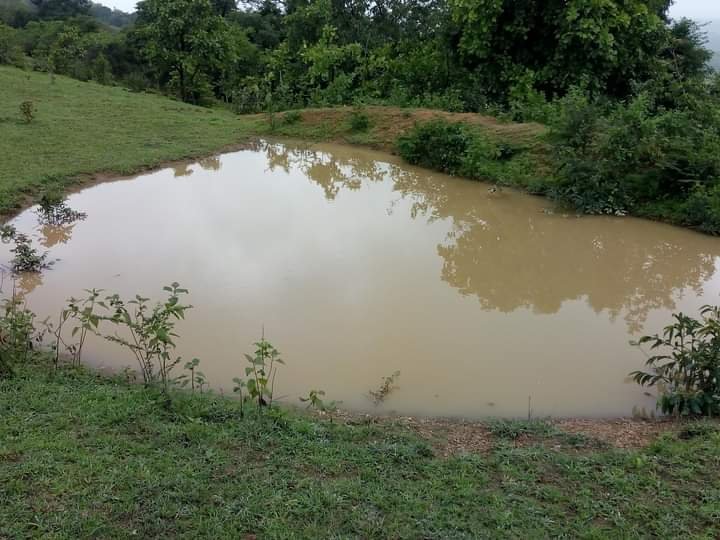
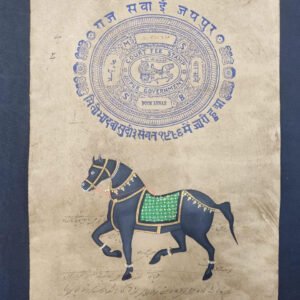




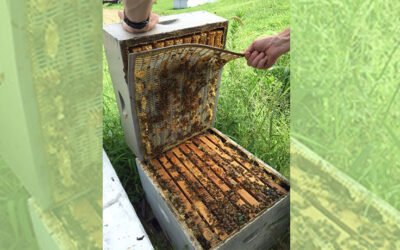
0 Comments